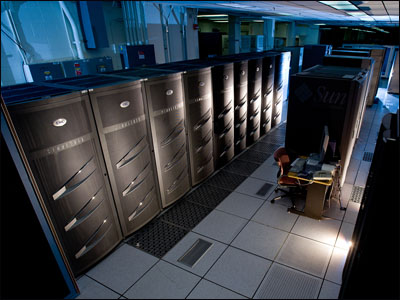To run IT as a business, strip it down to the core

There's a movement afoot to better position information technology departments as service providers. In the process, many of the more bloated processes and platforms that have occupied enterprises' time and resources are melting away, "like icebergs."

That's the view of Ian Clayton and Paul Chapman, who recently addressed the challenges and opportunities of "IT as a Service" in a recent webcast. Chapman, VP of global infrastructure cloud operations at VMWare, revealed how his company's internal IT made the journey, while Clayton, SVP of operations at G2G3 Americas, provided perspective on where the journey leads next.
The movement to cloud -- both using and providing cloud-based services -- is laying bare the processes and technologies that really aren't essential to the core business, Chapman observes. "When you look at the types of workloads that are typically moving to a cloud-based models -- where you’re moving you rHR processes out to a Workday, or ERP out to a NetSuite -- those types of processes aren’t the ones that differentiate you in the marketplace," he says. "Those are siloed business processes."
"When you move them to the cloud, what you’re really doing is freeing up IT to things that really do differentiate you," Chapman continues. Until now, IT money and time has been consumed with "keeping the lights on" for "complex, human middleware, with a lot of standard repeatable work."
Clayton says IT as a Service is not about the utility model, which suggests that IT resources be turned on and off like a lightswitch. Rather, it focuses on the delivery of services to internal and external customers. "If we're really serious about lining up capabilities, we need to pay due respect to what service management is all about. Frankly, in recent years, I think we’ve been almost coning ourselves inside IT -- by focusing on process and infrastructure and the comfortable parts of IT."
Instead, it's time to expand beyond the infrastructural aspects of IT and focus on touchpoint management -- how customers will be interacting with systems and applications, Clayton explains. IT should be virtually invisible to end-users -- at least that's the goal. Being an effecting service operation means "acting and behaving like a SaaS company, but doing that internally."
To get to a more customer-driven state of IT, Chapman says there is an opportunity to move, incrementally, to a service mode with each new upgrade project. "It doesn’t matter what IT organization you are in -- at some point there are technology refreshes, capacity growth, and investments in the current aging infrastructure that need to be made," he says. "There’s opportunity to take that money time and effort that you’re going to place in an ERP upgrade, or infrastructure upgrades. If you have your strategy laid out, you can make that reinvestment into something that is more transformative in nature."